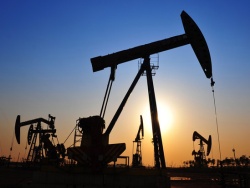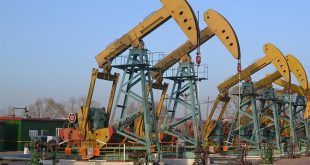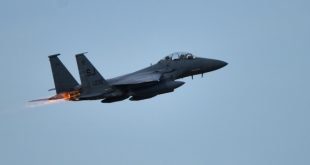
For most oil producers, the current level of oil prices is quite comfortable. Even the US, which is $50 — the threshold of profitability is gradually restore production. But a number of countries with a situation do not. For Russia, as the manufacturer, the current price is acceptable: the country increases its production and exports. However, every dollar in the price of a barrel means for the Russian budget $2 billion in revenues or losses.
Since mid-August the price of Brent crude oil fluctuating between $47-50 per barrel. Psychological mark of $50 is the equilibrium price, it is repeatedly stated by both producers and market experts. So, the Russian Minister of energy Alexander Novak previously called the price “fundamentally good” that satisfies both producers and consumers. But urged not to rely on the fact that the price of a barrel will rise above this level.
However, the cost of $50 per “barrel” does not all.
Oil at a loss
Most of all dissatisfied with Venezuela, where oil production is teetering on the verge of profitability (according to various estimates, the cost of oil production in the Orinoco river basin is $35-45 per barrel). But most importantly, that Venezuelan oil is “heavy” and, in order to transport them, it must be diluted with lighter imported oil. But also buy the “light” oil Venezuela is becoming increasingly difficult. A deep economic crisis (and the economy more than 90% dependent on revenues from the oil sector) has led to the fact that for the first seven months of this year oil imports to Venezuela decreased by 21% and amounted to 154.5 thousand barrels per day. While the countries of Central America and the Caribbean Venezuela sells its oil at preferential prices, i.e. at a loss.
At the end of last week, Venezuelan President Nicolas Maduro said that Venezuela, in Alliance with Iran trying to find ways of stabilizing the oil market. Caracas earlier declared the need to return to the idea of fixing the level of production.
Iran, by the way, in the current situation is not poor, is constantly increasing its production. However, Tehran is interested in the growth of prices in order to increase revenues (the country has large plans for the development of oil and gas, and that takes money). On the other hand, Iran, which in April broke an agreement to freeze production level, and now supports this idea. This is due to the fact that the country has almost reached the pre-sanctions output of oil sanctions the U.S. and Europe, limiting exports, and hence oil production, was abolished only in January 2016).
Also interested in the growth of prices, countries such as Nigeria and Algeria. At first the average production cost is about $30 per barrel. But in each case, costs can be higher because of the constant attacks by radical groups, which also prevented the export of Nigerian oil.
In Algeria the problem of depletion of deposits.
The price of $50 per barrel is an important reference point for shale producers of the US, as this level is considered the milestone of profitability (although for many local producers projects viable at lower prices). As I wrote last week, The Wall Street Journal, after prices hit the psychological mark of, a number of major companies such as Devon Energy and Pioneer Natural Resources) has decided to increase investment and re-run previously mothballed projects.
However, production in the United States is in decline. For the week ended 26th August, it fell by 60 thousand barrels per day and amounted to 8,488 million barrels. And the week before also saw a drop.
Northern neighbor of USA, Canada is also experiencing difficulties due to low prices. The fact that canadian oil extracted from tar Sands. And it is necessary to bring to the MERCHANTABILITY by catalytic cracking, which incurs additional costs. The cost of production of canadian oil could reach $45-50 per barrel.
“The cost curve is traditionally built from a minimum of the Persian Gulf (“sand dug – oil”) to a maximum for shale projects, ” says editor in chief for commodity markets Thomson Reuters Kortes Alexander Yershov. In General this is true, but there are some important nuances.”
First, according to Yershov, it is necessary to consider the transport arm, that is, the distance from major markets, the delivery may significantly affect the final price even at a low cost. For example, for oil from Kazakhstan. In addition, one should consider the qualitative characteristics: “easy” oil is more expensive and thus safer to transfer the increase in cost of production in the price of a barrel. Although the premium “easy” oil in recent years has been steadily declining due to refineries modernization.
Finally, the ability to regulate production. There are often situations, when to stop production more than sell oil at a loss. “We saw negative netbuki in Canada, Venezuela, the same Kazakhstan, but production continued (and continues),” says Ershov. On the other hand, the leader of OPEC, Saudi Arabia is able to regulate the prey.” Considering all these factors we can say that the right proportion of production from its cost no indicates Ershov.
“But there is intense competition for a share of the sagging oil market, when the costs are used by participants as only one of the mechanisms”, — says the expert.
The budget is not balanced
Previously, the Agency Bloomberg published estimates of the IMF, OPEC and market experts about the cost of a barrel necessary for any producing country to balance its budget. And here we are talking not about the cost of production, and about some other numbers. Thus, the range of $50-60 can hold only Iraq, Qatar, Kuwait and Iran (the latter is rather arbitrary, as it is priced at $61,5). Saudi Arabia has the necessary quotes at $66,7, UAE — $71,8, Ecuador — $75,1, Angola — $93,1.
Nigeria, Venezuela and Libya will be able to balance the budget only if oil prices will go significantly above $100. And in the case of Libya Bloomberg leads a fantastic figure of $195,3 per barrel.
Russia traditionally stands somewhat apart from the other leaders of the oil market. Russian companies, the relatively low cost of production (the head of “Rosneft” Igor Sechin, for example, said about $2.1 per barrel). But the cost of actually lifting the oil out of the ground should take account of other costs, primarily taxes. Here, costs are already out at around $20 per barrel.
“Companies of the Russian Federation helps the devaluation of the ruble, given that the sales income they receive is mostly in dollars, and costs are, in contrast, mainly in roubles” — the head of analytical Department of national energy security Fund Alexander Pasechnik.
Because of this, Russia continues to increase its oil production. As said earlier Alexander Novak, in 2016, the production level should be 540-543 million tonnes in 2015 was 533 million tonnes).
In addition, the outgoing from the market “honey” oil (primarily canadian, partly American shale and oil from Venezuela) allow Russia to increase exports, taking new market share. According to the energy Ministry, during the seven months of 2016, the total volume of Russian oil exports rose 5.9% compared to the same period last year and amounted to 148.7 million t
However, the decline in oil prices early in the year still gave significant negative effect. According to the Federal customs service, Russia’s revenues from oil exports in the first half of the year decreased by 31.5% to $32.9 billion.
Thus, are suffering from falling prices are not actually manufacturers, but mostly the Russian budget.
“Every dollar in the price of a barrel is $2-2. 2 billion of revenues to the Federal budget,” said Alexandra Suslina of the Economic expert group.
According to the forecasts, budget expenditures in 2016 will amount to 15.7 trillion rubles., with revenues of 12.5 to 12.7 trillion rubles.
OPEC restricts the rest
Global oil at the moment, the market is gradually coming to balance. “However, the record stockpiles of oil in the world put pressure on prices,” — said a senior Vice President Argus Vyacheslav Mishchenko.
At the same OPEC countries are gradually out of the market producers outside the cartel.
For the first half of 2016, compared with the same period of 2015, OPEC has increased production by 750 thousand barrels per day. Countries outside the organization for the same period reduced its production by 1 million barrels a day.
All this, according to Mishchenko, delays the timing of final balancing of the market. Now it is to be expected at the end of this – early next year, although it had previously forecasted in the second and third quarter.
According to Argus, the total supply in the oil market now stands at 96.4 million barrels per day with demand to 95.3 million barrels. Mishchenko notes that the proposal last year was at the same level, but demand was 93.9 million barrels a day.
The balance of supply and demand varies from region to region. If in the Atlantic basin (Europe and the Americas), with demand at 54.2 million barrels offer makes 56.5 million barrels, in the Asia-Pacific region offer — only 8.8 million barrels, while demand for 32.6 million barrels. And in the middle East the situation is the opposite: 8.6 million barrels of demand and 31.1 million barrels.







